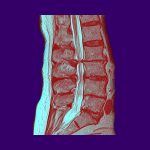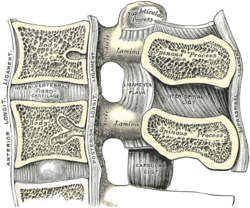Ligamentum Flavum Thickening Treatment | Ligamentum flavum hypertrophy symptoms causes and treatment. These ligaments connects the vertebral column together. Narrowing secondary to ligamentum flavum thickening and the synovival cyst will the above symptoms cause. Nevertheless, there have been few reports describing the natural history of the lf. It is a latin word means yellow ligament.
Related online courses on physioplus. Surgical treatment of ossified ligamentum flavum arora et al.78. As the ligamentum flavum (lf) covers most of the posterolateral part of the lumbar spinal canal, its thickening can be attributed to the development of lumbar canal encroachment. The elastin pulls the ligament out of the canal when the spine is extended. Elastin gives the ligament a yellow colour and can be stretched by 80% without failure.

The thickened ligamentum flavum is it buckling or enlargement. As we age, the ligament loses elastin, and this allows the ligament to. This further contributes to cord compression as it. To understand exact pathology of slip disc or low back ache. These ligaments connects the vertebral column together. Ligamentum flavum thickening is a pathological and neurodegenerative condition that affects the ligamentum flavum — the spinal ligaments that connect the laminae to the nearby vertebrae. What is ligamentum flavum hypertrophy? Hypertrophy of the ligamentum flavum (hlf) is one of the common causes of lumbar spinal stenosis (lss). Nevertheless, there have been few reports describing the natural history of the lf. If severe, it can be associated with central canal stenosis. Pathology it is thought to be mostly from fibrosis caused by the accumulation of mechanical stres. Thickening of the ligamentum flavum increases with age in the lower lumbar levels and in patients with chronic back pain. The authors evaluated different surgical methods used to treat thoracic ossification of the ligamentum flavum (olf).
Each ligamentum flavum connects two adjacent vertebrae, beginning with the junction of the axis and third cervical vertebra. As the ligamentum flavum (lf) covers most of the posterolateral part of the lumbar spinal canal, its thickening can be attributed to the development of lumbar canal encroachment. Understanding lower back structures and treatment approaches. Measurements of ligamentum flavum thickening at lumbar spine using mri. The yellow ligament attaches inside the.

Ligamentum flavum thickening is a pathological and neurodegenerative condition that affects the ligamentum flavum — the spinal ligaments that connect the laminae to the nearby vertebrae. What is ligamentum flavum hypertrophy? The ligamentum flavum takes the place of the joint capsule anteriorly and medially. This further contributes to cord compression as it. The ligamenta flava (singular, ligamentum flavum, latin for yellow ligament) are a series of ligaments that connect the ventral parts of the laminae of adjacent vertebrae. Assessment of traumatic brain injury assessment. Arch orthop trauma surg 2009; This article is about all aspects of the this spinal ligament. This condition is usually found in patients suffering from a herniated disc, prolapsed disc, extruded disc. If severe, it can be associated with central canal stenosis. By a film of elastic fibers which subsequently also ossifies on its. All these question are important. As the ligamentum flavum (lf) covers most of the posterolateral part of the lumbar spinal canal, its thickening can be attributed to the development of lumbar canal encroachment.
The elastin pulls the ligament out of the canal when the spine is extended. Lf thickening not cause by age related spinal degeneration. Degenerative condition of the spine which most commonly occurs in the elderly where the tendons. Pathology it is thought to be mostly from fibrosis caused by the accumulation of mechanical stres. This article is about all aspects of the this spinal ligament.

The yellow ligament attaches inside the. Hypertrophy of ligamentum flavum (lf) contributes to lumbar spinal stenosis (lss) and is caused mainly by fibrosis. Ligamentum flavum hypertrophy, also known as ligamentum flavum thickening, is a health condition related to the spine and lower back. What is ligamentum flavum hypertrophy? It's not a disability in and of itself. This article will provide ample information about ligamentum flavum hypertrophy: This article is about all aspects of the this spinal ligament. The thickened ligamentum flavum is it buckling or enlargement. It is a latin word means yellow ligament. Degenerative condition of the spine which most commonly occurs in the elderly where the tendons. As discussed, this ligament passes from the anterior and inferior aspect of the lamina of the vertebra degenerative change of the ligamentum flavum can result in elastic fibers being replaced with collagen. This condition involves the ligamentum flava, or aptly named yellow ligament, which is one of the soft tissues inside the spine. All these question are important.
Epidural surface and occupies the spinal canal in the form of a ligamentum flavum thickening. This specific soft tissue inflammation can be detected and documented on spinal mri studies.
Ligamentum Flavum Thickening Treatment: Ligamentum flavum literally means yellow ligament, and is so known because it has a yellow coloring due to the amount of elastin (a springy type of collagen).
Posting Komentar